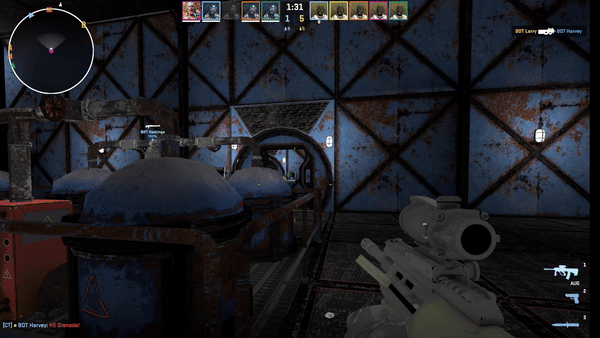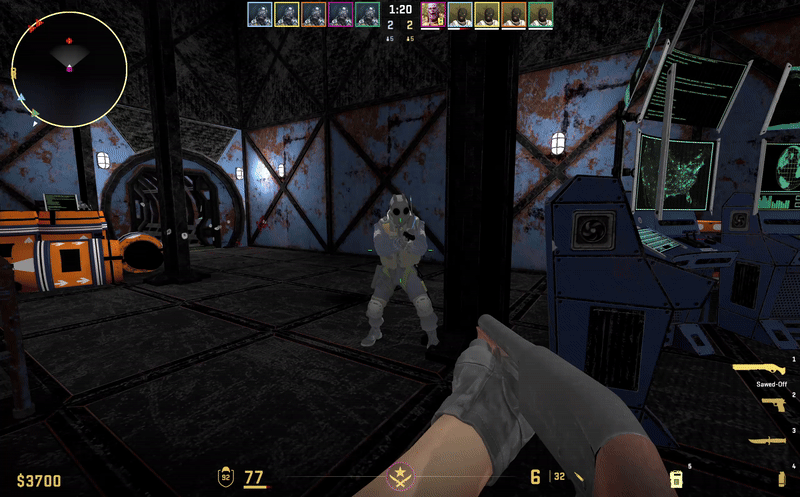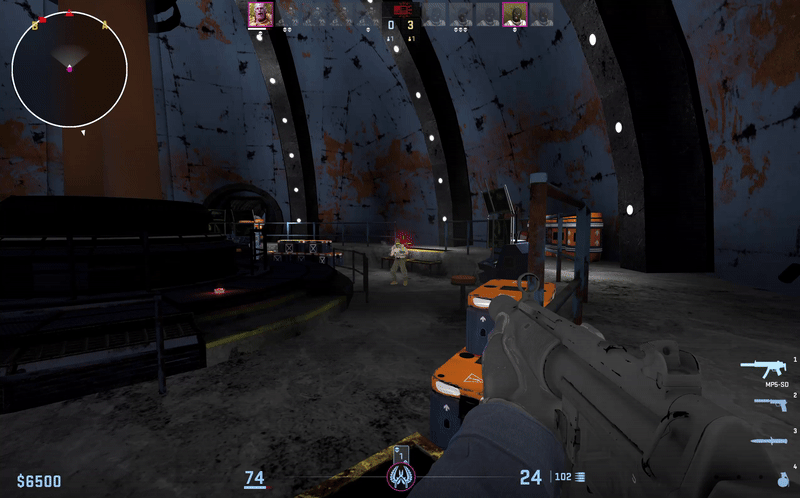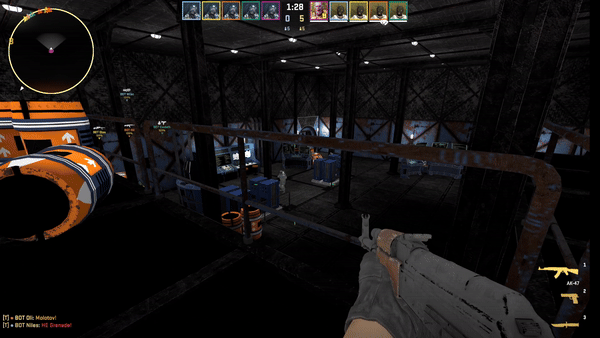


Project work summary
While working on Sea Station Takedown, I worked on level design. I created and iterated upon a level layout for a custom Counter-Strike 2 competitive map. I dealt with the importation of external assets, making them ready for usage in Hammer Editor. For the offline version of this level, I debugged and tested AI interactions.
ProjecT Summary
Terrorists have boarded an American sea station and have been given direct orders to sabotage one of the station's key components, in order to neutralize it. The counter-terrorists have been given direct orders from the commander of the sea station to find all hostile targets and eliminate them. The fate of the sea station depends on this encounter!
Production Summary
Project Title: Sea Station Takedown
Project Platform: PC
Project Engine: Hammer Editor
Project Timeline: August 2024 - December 2024
My Role

Being the sole developer on Sea Station Takedown, I was tasked with designing, implementing, testing, and improving the level. I would do research into different Counter-Strike 2 levels, and discover how the level structure catered to the gameplay. Using this knowledge, I created layouts that tried to capture a similar essence to those levels.
As a solo developer, I had to also bridge the gaps of other disciplines. I found a asset pack that invoked the aesthetic I was aiming for, and imported and modified the assets to be engine ready for Hammer Editor. I also tinkered with and debugged Counter Strike 2 AI, so that the game could be run without using multiplayer.
Level Design Process
Since Sea Station Takedown was a level constructed around a pre-existing game, with a set of previously defined rules, the design/iteration process taken to reach the final product was quite different from levels I had worked on previously. Said process can be broken down into six steps:
1. Research Counter Strike II's competitive mode and analyze the layouts utilized in its levels
2. Define consistent structural points between these levels to get a sense of the developer's level design philosophy
3. Draft a sketch of the level layout, hitting the structural points defined and following the developer's level design philosophy
4. Create a graybox, using Hammer Editor's modeling toolkit, based on the drafted sketch
5. Test the level to see if it works well within the confines of Counter Strike II's competitive mode. Continue iterating and testing until it does
6. Implement modular asset kit to replace place holder assets, adjusting design as needed


Designing Around Bot Behavior

Counter-Strike 2's bots, while advanced for their time, still have many limitations in their behaviors. Their movement patterns are easily identifiable after multiple playthroughs, which makes it difficult to show off the variety of encounters designed in Sea Station Takedown's level structure.
Issues like these are tough to design around, as they have nothing to do with the level design. The true design limitation of using bots is understanding that levels can better be shown off using real players to demo, as they will appreciate the design philosophies at play.
When it came to designing the level layout for Sea Station Takedown, a major obstacle that needed to be taken into consideration was Counter-Strike 2's bot behaviors and movement patterns. Since the timeline of development was too tight for multiplayer, bots were the best next solution.
The bots in Counter-Strike 2 are very finicky when it comes to their behavior patterns. Object collisions must be precise in order for bot pathing to work properly. This required a large amount of time allotted to tinkering with object collisions to ensure the gameplay flowed smoothly. If object collisions weren't precise, bots would often get stuck or not know how to navigate to an objective.

Post Mortem
Working on Sea Station Takedown taught me how to design around limitations in software, skill, knowledge, and time.
Sea Station Takedown's development was on a tight timeline, which meant I had to improvise and adapt in order to accomplish the vision I set out with for the level. Hammer Editor was a software new to me with this project, requiring me to learn it on the fly. I was able to learn the software quickly and effciently.


Being able to work within limitations, such as a limited amount of assets and bots with tricky AI behaviors, was the greatest strength I gained from this project. Many hiccups appeared throughout Sea Station Takedown's development, yet I was able to work around them and push the vision I set out to create.
The key to this was making sacrifices where necessary, while avoiding compromising the initial vision as much as possible. Not everything came to fruition the way I first envisioned it, but Sea Station Takedown still accomplished what I set out for it to be.